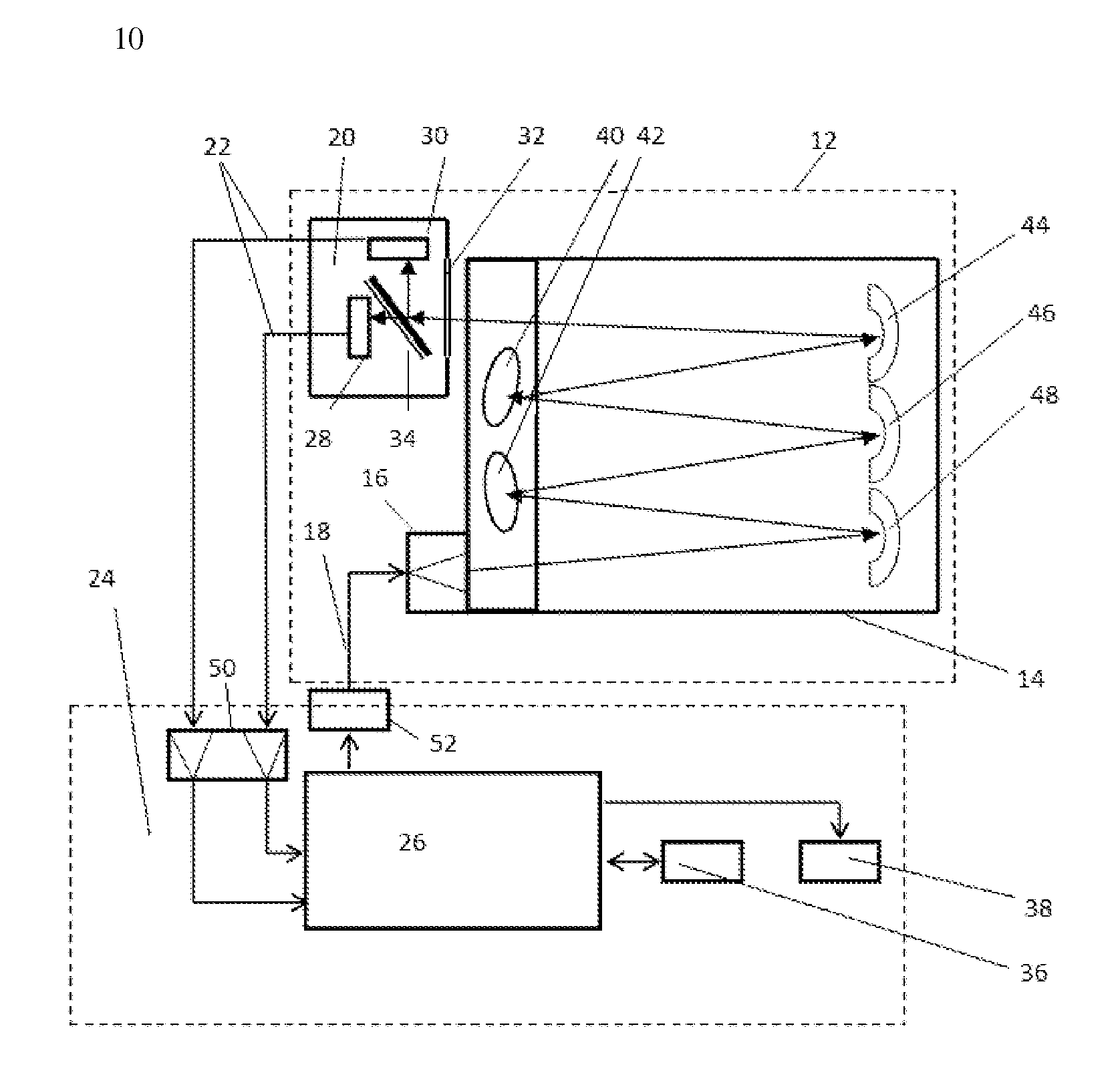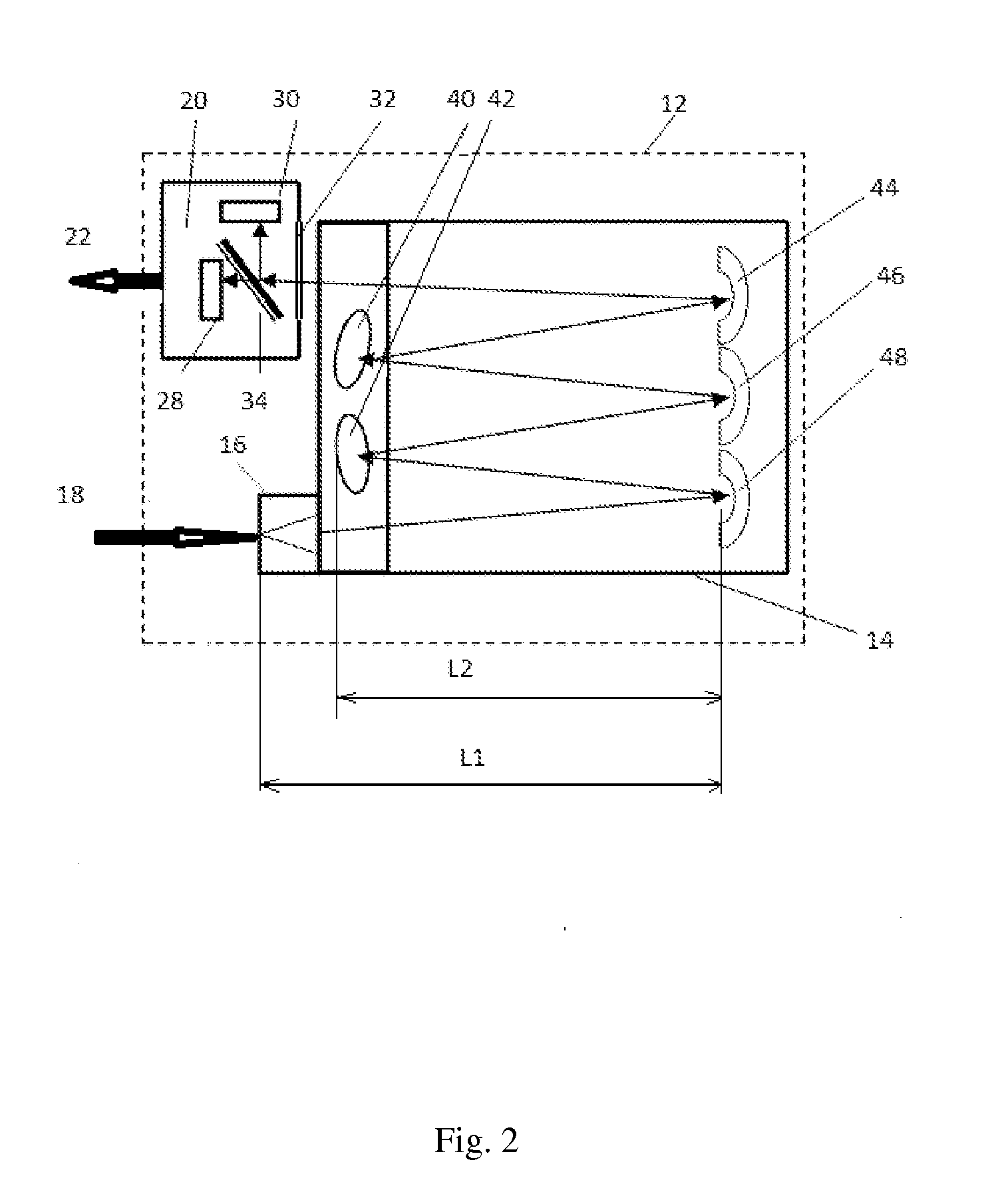Optical Gas Analyzer
a gas analyzer and optical technology, applied in material analysis, radiation pyrometry, instruments, etc., can solve the problems of high energy consumption, large dimensions, and high energy consumption, and achieve the effects of reducing energy consumption, high detectability, and fast respons
- Summary
- Abstract
- Description
- Claims
- Application Information
AI Technical Summary
Benefits of technology
Problems solved by technology
Method used
Image
Examples
Embodiment Construction
[0054]The feasibility of the optical gas analyzer is explained in the following description. The present optical gas analyzer 10 (FIG. 1) comprises an optical unit 12 with an optical gas cell 14 providing for the infrared radiation passage, an infrared radiation source 16 located at the inlet 18 of the optical unit 12, immediately before the gas cell 14, and also a detector 20 of the infrared radiation located at the outlet 22 of the optical unit 12, immediately after of the above-mentioned cell 14. There is also a control unit 24 comprising a microcontroller 26, coupled with the infrared radiation source 16 and the infrared radiation detector 20. The control unit 24 is adapted to change operation modes of the infrared radiation source 16, and to process the infrared radiation, received by the detector 20, to display the results obtained. The optical gas cell 14 is adapted to transmit radiation energy along the zigzag-like trajectory with multiple radiation concentration from its in...
PUM
 Login to View More
Login to View More Abstract
Description
Claims
Application Information
 Login to View More
Login to View More - R&D
- Intellectual Property
- Life Sciences
- Materials
- Tech Scout
- Unparalleled Data Quality
- Higher Quality Content
- 60% Fewer Hallucinations
Browse by: Latest US Patents, China's latest patents, Technical Efficacy Thesaurus, Application Domain, Technology Topic, Popular Technical Reports.
© 2025 PatSnap. All rights reserved.Legal|Privacy policy|Modern Slavery Act Transparency Statement|Sitemap|About US| Contact US: help@patsnap.com



